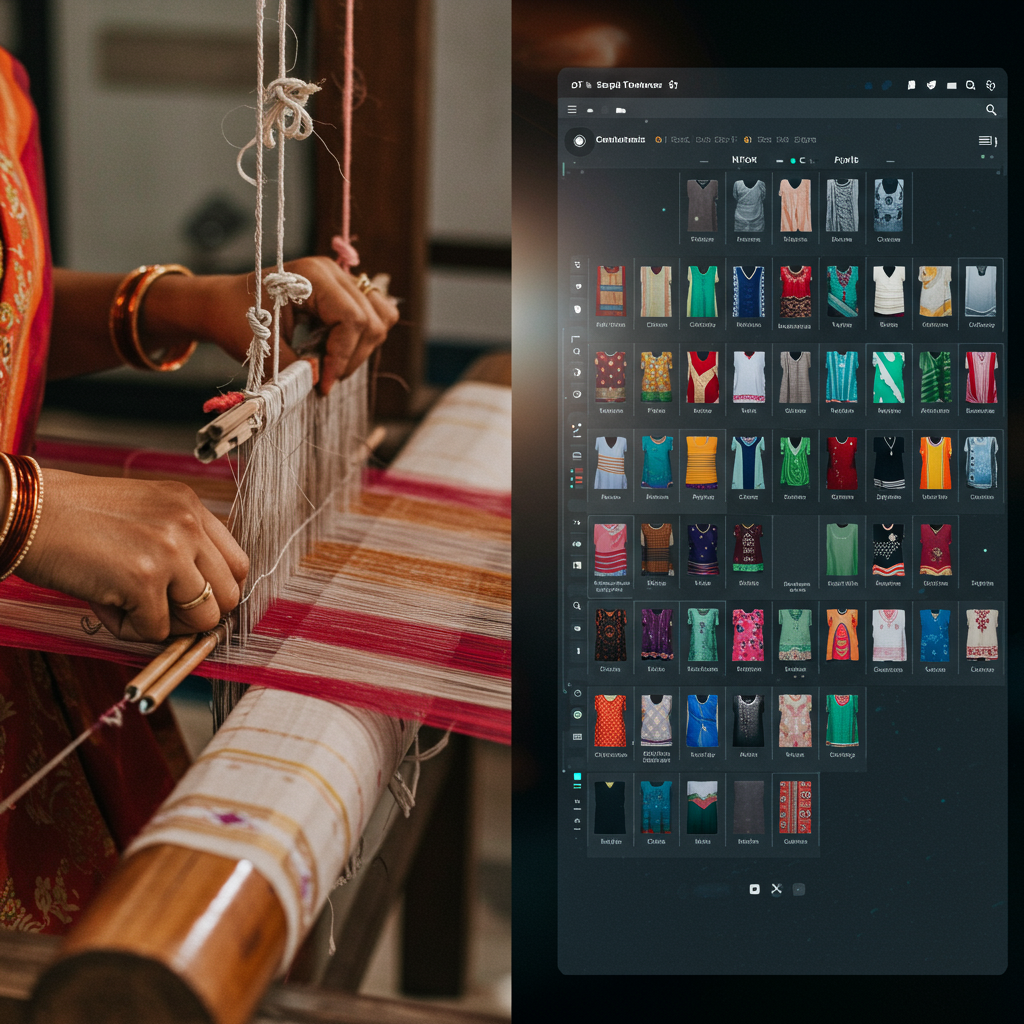
How Google's Algorithms Impact Saree Artisans: The Hidden Cost of AI
The advent of sophisticated AI-driven classification systems, such as those employed by Google to categorize and present products like sarees in search results, represents a powerful technological leap. From a sociological standpoint, however, these seemingly neutral algorithms are far from value-free. Instead, they often reflect and, more critically, exacerbate existing inequalities of income and access, particularly within traditional industries like saree production. By favoring certain types of digital representation and production methods, Google's AI inadvertently creates a tiered system of visibility and economic opportunity, significantly disadvantaging those at the margins of the digital economy.
At the most advantaged end of this spectrum are the large-scale manufacturers, organized retailers, and e-commerce platforms. These entities possess the financial and technical resources to optimize their presence within Google's algorithmic ecosystem. They can afford professional photographers who capture sarees in ideal lighting, against consistent backgrounds, ensuring visual uniformity that AI models are trained to recognize efficiently. Crucially, they employ marketing and SEO specialists who meticulously craft product descriptions, alt-text, and metadata, embedding precise keywords like "Kota cotton," "Mangalagiri silk," or "hand-embroidered" in ways that align with Google's Product Taxonomy and search algorithms. Their ability to generate high volumes of consistent, digitally "clean" data allows their products to be accurately classified, highly ranked, and widely discovered by online consumers. This digital visibility translates directly into increased sales, enhanced brand recognition, and the capacity to scale their operations, further solidifying their market dominance and income.
Conversely, the most profoundly disadvantaged by this AI-driven classification are the traditional handloom weavers, independent artisans, and small, often family-run, production units. Many of these producers operate in rural or semi-urban areas, frequently lacking basic access to smartphones, reliable internet connectivity, or the digital literacy required to navigate complex online platforms. Even if they could access the internet, they often lack the resources for professional photography, relying on rudimentary images taken with basic phones, if at all.
For these artisans, the very essence of their craft—the subtle irregularities, unique textures, and minor imperfections that are hallmarks of a handwoven saree and embody its artisanal value—can become a digital liability. AI models, often trained on the uniformity of mass-produced goods, might struggle to accurately classify these nuanced visual cues. A handloom saree's distinct "feel" or the slight unevenness of its weave, which a human connoisseur would appreciate, might be overlooked or even penalized by an algorithm seeking standardized patterns. This leads to misclassification, lower search rankings, or even complete invisibility in online searches, regardless of the saree's inherent quality or cultural significance.
Furthermore, the AI's classification system, by prioritizing easily quantifiable attributes, risks devaluing the intangible aspects of handloom production, such as the immense skill, time, and cultural heritage embedded in each piece. When a search for "cotton saree" primarily returns results from large retailers whose products are optimized for AI recognition, the unique "Kota cotton" handwoven by a specific artisan, with its distinct weave and story, gets buried. This forces traditional weavers into a precarious position, increasingly dependent on intermediaries who can bridge the digital divide, but often at the cost of the weaver's profit margins and direct market access. Their labor, once visible in local markets, becomes invisible in the dominant digital marketplace.
In conclusion, while Google's AI-based classification aims for efficiency and relevance, its implementation within a pre-existing landscape of unequal access to technology and resources deepens economic disparities. It creates a digital divide that mirrors and amplifies the socio-economic divide. Large producers thrive by conforming to and leveraging the AI's preferences for standardized, digitally optimized data, while traditional artisans, whose craft is inherently less amenable to such standardization and who lack digital infrastructure, face increasing marginalization. From a sociological perspective, this highlights the critical need for inclusive technological design and policies that actively support the digital integration of marginalized producers, ensuring that AI serves to uplift, rather than further entrench, existing inequalities.
Credits: This post was crafted with the assistance of an AI language model
